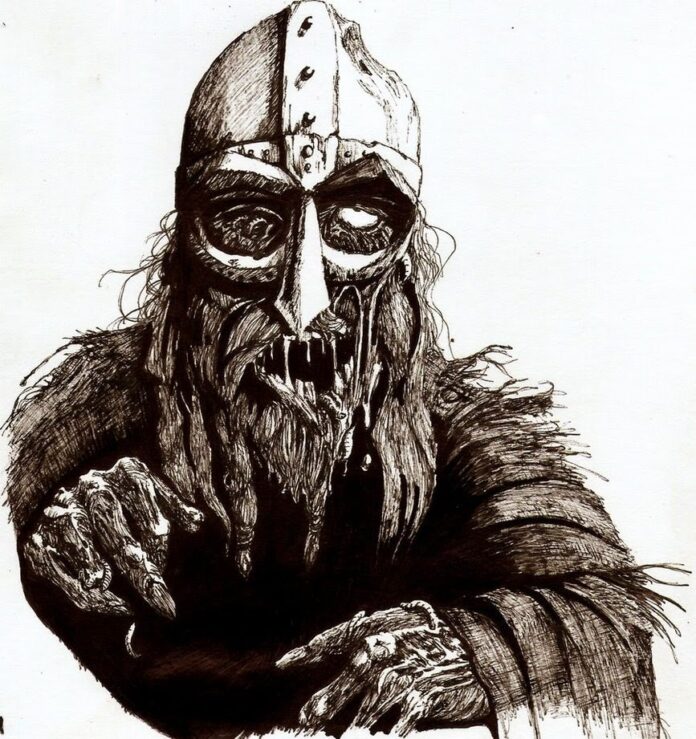 |
| Draugr |
The draugr or draug is a sort of zombie in Norse mythology, an undead being that appears as a mouldering corpse and often guards the treasures buried in the mound graves of important figures. In this fashion, the draugr is like a haugbui, which is also a reanimated corpse that guards a grave, but one that cannot leave. Some draugar (plural) also exist to right wrongs done to them in life.
The most well-known of these draugar is Glámr whose ultimate defeat by the hero Grettir is recounted in the Icelandic Sagas.
Draugar are most often created by the failure to properly bury a corpse by heeding all prescribed rituals. As well, the dead might return in such a fashion if they were an especially mean-spirited or greedy individual. But, much like our post-modern zombie, a draugr can be created when a person becomes infected by one.
A draugr is already dead, but can die a second death if it successfully avenges itself, is destroyed, or it decomposes too much.
Draugar have superhuman strength and can change their size, growing big enough to crush a person with their mass. They also attack victims, by devouring their flesh, drinking their blood, or simply driving them insane.
One can know the location of a draugr’s grave by the odd behavior of animals around a particular spot. It is also said that foxfire near a mound will indicate the presence of a draugr.
These walking dead also have some magical abilities (known as trollskap) not unlike those of witches, including shape-shifting, clairvoyance, and cursing. A draugr can also move through solid matter, swimming through stone as if it were water. This allows him access most anywhere (including to and from a grave) with impunity. Draugar can bring with them diseases to plague the living and can bring about darkness even during the day.
To stop a draugr from ever rising, iron scissors were placed on the chest of the deceased. Other rituals involved secreting twigs in various pockets and folds on their clothing. Needles might have been driven into their feet to “pin” them to the earth, or their feet might have been bound together to effect the same result. Another manner in which the good people of a village would attempt to dissuade such a revenant creature would be to make the trip from the home to the grave site as confusing as possible, so that the corpse would be unaware of exactly where it then laid. In a similar fashion, one that shows up in other areas as well, is the creation of a corpse door in the house, a specially built door that would be sealed after the corpse has left so that it cannot find its way back to the house.

